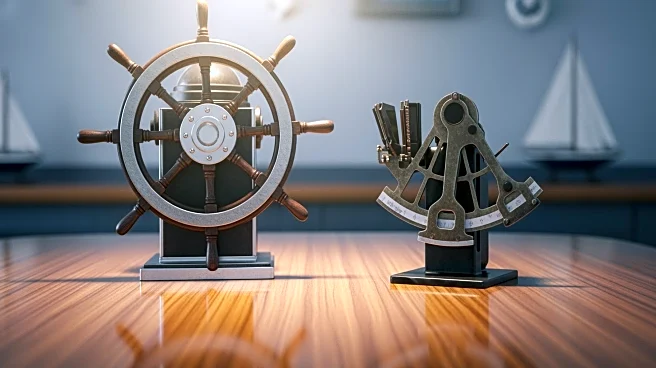What's Happening?
The Australian Transport Safety Bureau (ATSB) has identified poor bridge resource management as a key factor in the collision between the boxship Maersk Shekou and the tall ship Leeuwin II in Fremantle. The incident occurred on August 30, 2024, under
challenging weather conditions with heavy squalls and gusty winds. The primary pilot was fatigued, leading the backup pilot to take charge. Communication issues and a lack of shared mental models among the bridge team contributed to the failure to properly manage the ship's course. The collision resulted in the dismasting of the Leeuwin II and minor injuries to two crew members.
Why It's Important?
This incident highlights the critical importance of effective bridge resource management in maritime operations. The failure to maintain a shared mental model and communicate effectively among the bridge team can lead to significant safety risks. The findings underscore the need for rigorous training and protocols to ensure that all team members are aligned and responsive to dynamic conditions. The incident also raises concerns about the adequacy of current safety measures in place for navigating challenging harbor conditions, which could have broader implications for maritime safety standards.
What's Next?
The ATSB's findings may prompt a review of bridge resource management practices and training programs within the maritime industry. Shipping companies and regulatory bodies might consider implementing stricter guidelines and oversight to prevent similar incidents. Additionally, there could be increased focus on improving communication protocols and ensuring that all bridge team members are adequately prepared to handle adverse weather conditions. The incident may also lead to discussions on enhancing the design and infrastructure of harbors to better accommodate large vessels under challenging conditions.
Beyond the Headlines
The incident raises ethical questions about the responsibility of shipping companies to ensure the safety of their crews and vessels. It also highlights the potential environmental impact of maritime accidents, as collisions can lead to spills and other ecological damage. The need for sustainable and safe maritime practices is becoming increasingly important as global shipping traffic continues to grow.













